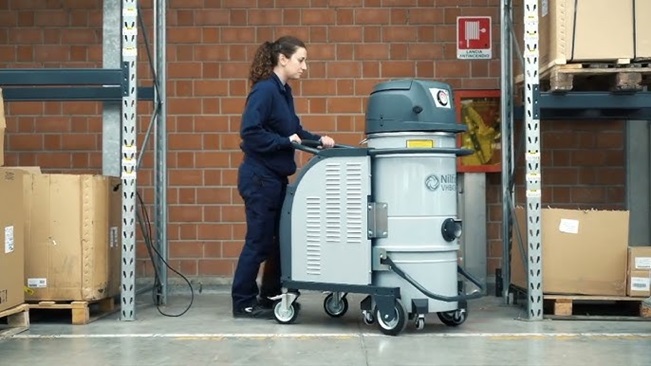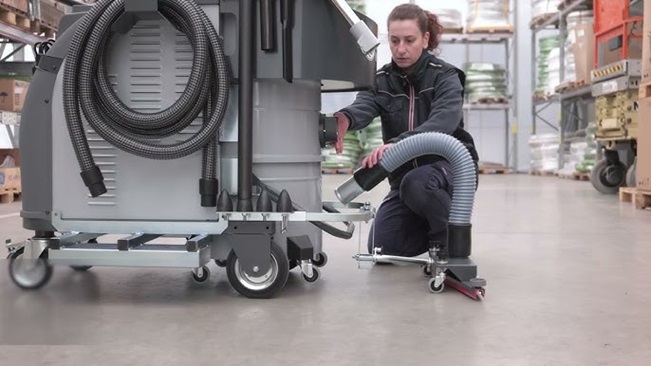In industries where the air you breathe is just as important as the surface you’re working on, knowing your dust class is paramount. When dealing with concrete, lead, asbestos, or even engineered stone, using the incorrect vacuum not only puts your team at risk but also places your business on the wrong side of WHS compliance.
That’s where an H Class vacuum comes in. These machines are not your run-of-the-mill dust extractors. Designed to tackle the most hazardous particles on the job site, they’re the go-to kit for high-risk environments where carcinogenic or toxic dust can’t be approached lightly. Let’s take what sets an H Class vacuum cleaner apart, and why it could be a necessity for your next project.
What Are H-Class Vacuums?

Specifically designed to collect dangerous dust, an H Class vacuum is an industrial vacuum cleaner with a high level of filtration. That includes fine dust, such as silica, asbestos, lead-based paint dust, mould spores, and other airborne contaminant particles considered to be toxic or carcinogenic.
To meet Australian WHS standards, H Class vacuums must be supplied with certified HEPA filters (H14 or higher) that are capable of trapping 99.995% of particles as small as 0.3 microns. Sealed collection systems, filter saturation alarms, and other built-in safety features are added to ensure that dust is not released into the air while in use or being dumped are also fitted.
If you’ve explored industrial cleaners before, you’ve likely heard or read about other vacuum classes, as well, including M and L classes. So, is H-class vacuum better than M-class? Yes, the H Class is at the top of the dust safety classification system. Here’s a quick breakdown of each class:
- L Class for low-risk dust (soil and basic dirt);
- M Class for dust with a medium danger (wood, concrete, plaster);
- H Class for dust that poses a high risk (asbestos, silica, mould, lead).
If your work involves anything in that last category, you’re legally required to use H Class equipment.
What Kind of Work Requires an H-Class Vacuum?
If you’re creating or agitating dust that’s dangerous to inhale, even in small amounts, H Class is the standard you need to comply with. H Class vacuums aren’t just helpful but likely non-negotiable if your business touches any of the following:
- Construction and demolition activity (specifically where concrete or engineered stone is being modified);
- Asbestos removal or remediation;
- Lead paint removal or historic building restoration;
- Warehousing of hazardous materials;
- Healthcare and pharmaceuticals production;
- Cleaning up sites with mould or biohazards.
How H Class Vacuums Work

Typically, a H Class industrial vacuum system has:
- A primary and a certified HEPA H14 secondary filter in a multi-stage filtration process.
- Sealed collection bags or disposable containers to prevent dust leakage
- Automatic user-free filter cleaning systems.
- Alarms or airflow monitors that notify users of clogged filters or decreased suction.
- Antistatic hoses and safety-rated fittings for maximum user protection.
All of that totals up to a vacuum system that doesn’t just vacuum up dust; it controls it, holds it, and keeps it from finding its way into your lungs, your office, or the environment.
Why Your Everyday Shop Vac Just Won’t Cut It
It’s simple to think of a high-powered shop vac being able to accomplish the same task for less money, but in dusty, high-hazard workplaces, it’s too much of a gamble. Low-end vacuums lack:
- Certified HEPA filtration;
- Sealed containment;
- H Class regulation compliance;
- Warning lights or automated filter cleaning systems.
Even when they seem to pick up the dust, the majority will put it back into the air or expose workers at disposal time. That will generate health problems, downtime, heavy fines, and litigation if a site inspection finds you in violation.
How to Pick the Best H Class Vacuum for Your Workplace?
Take into account these important factors when choosing an H Class vacuum.
Type of Dust
Are you working with concrete fine dust, asbestos fibres, or some other well-known hazard? Make sure the vacuum you select is approved for your particular application.
Work Environment
On-site or in a workshop? Indoors or outdoors? Portability, wheel type, and hose length are all factors, especially in confined spaces or mobile jobs.
Power Requirements
Does your workplace use standard 240V, or do you need 3-phase power? Some vacuum models also have battery power to provide complete convenience.
Filter System and Maintenance
Look for models with easy filter replacement, auto-cleaning, and full-filter warnings to reduce labour maintenance.
Waste Disposal
Sealed bag systems restrict exposure and provide easier disposal, especially when handling asbestos or silica dust. Some H Class vacuums also have waste containment kits.
The Bottom Line: Where Safety Is Not Optional
Choosing the right vacuum is not so much about having a tidy area but about keeping individuals safe and in line with the law. H Class vacuums are engineered for precisely that. Consider the following if you’re not sure if you require a H Class vacuum:
- Does your job involve fine, toxic, or carcinogenic dust?
- Are you working under WHS guidelines that require dust class compliance?
- Are you in charge of other people’s safety?
If the answer to any of these is yes, going out and buying the right vacuum isn’t just smart—it’s critical.
























